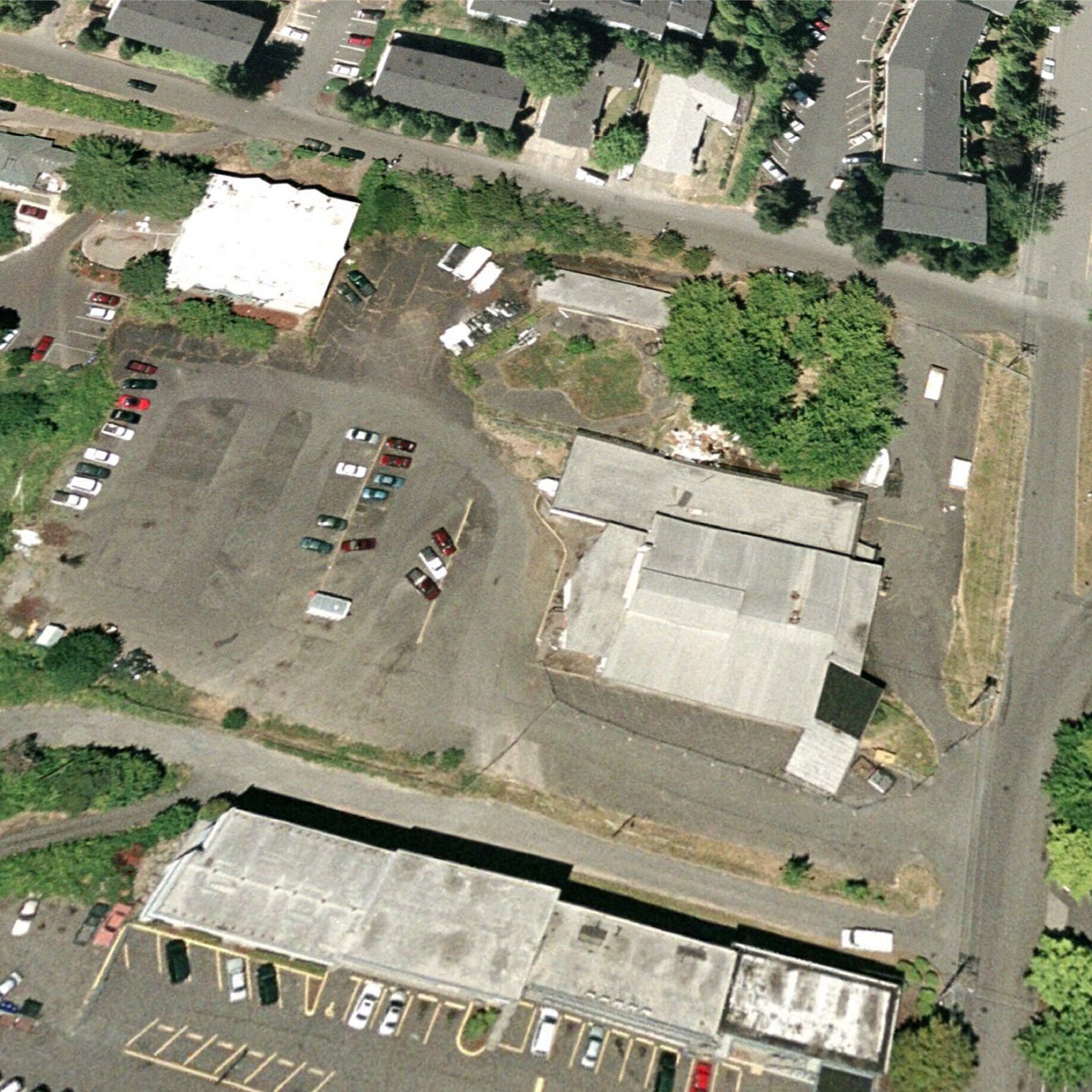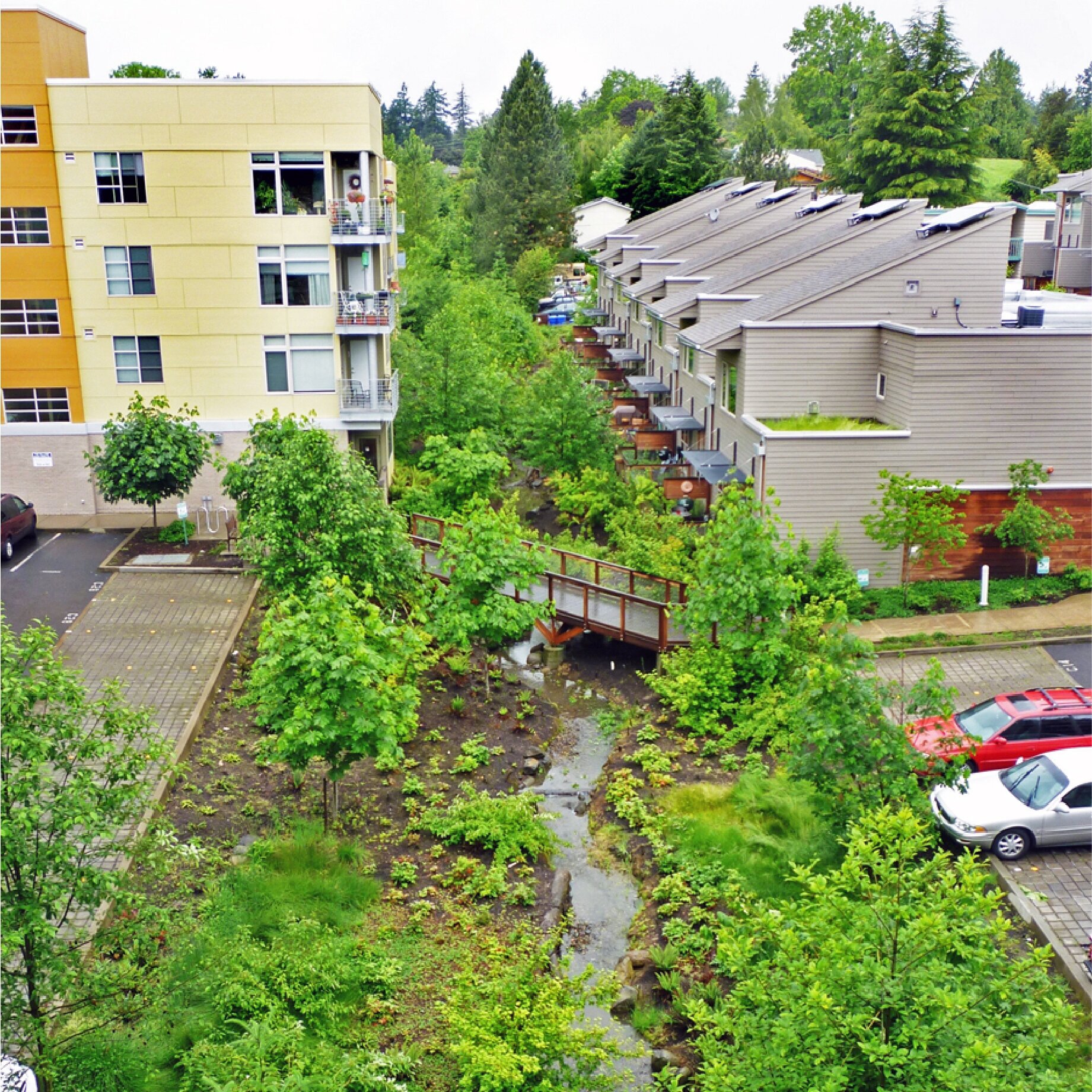Dolph Creek
Location: Portland, OR
Length: 1,000 feet
Cost: $355k
Year: 2006
The daylighting of Dolph Creek within Headwaters at Tryon Creek demonstrates how stream daylighting and restoration can be incorporated into new development and the built environment in Portland, OR.
Completed in 2006, Headwaters at Tryon Creek includes two apartment buildings, an affordable senior apartment complex, and 14 townhome condos. The development achieved Silver in Leadership in Energy and Environmental Design, a rating system for green development. It also piloted increased affordable multi-family housing in Portland.
The transformation involved dramatic revisioning. The three-acre site in Portland’s Multnomah neighborhood hosted a Fraternal Order of Eagles nightclub in the 1950s. The building was long abandoned when Jim Winkler of Winkler Development Corporation purchased the lot in 2002. Portland’s Bureau of Environmental Services approached Winkler about daylighting the then-unnamed tributary stream encased in a pipe underneath the property. An Oregon Department of Environmental Quality cleanup removed more than 2,200 tons of contaminated material from the former brownfield site [01].
In official sources, the creek was unnamed—referred to as a tributary to Tryon Creek. Colloquially, the creek is referred to as Dolph Creek (as in the name of the Dolph Creek Townhomes). Even today, the creek is often absent from maps. Because of the creek’s long entombment, its original names may be lost. Often, burying our urban waterways means a loss of our cultural connection to the landscape.
Headwaters at Tyron Creek received funding from Portland’s Green Investment Fund to demonstrate that “development can help restore the environment through design and engineering” [02]. The daylighted Dolph Creek replaced 1,000 feet of storm drain and connected upstream wetlands to a downstream rain garden. The stream includes a “five foot deep gravel lens below the stream bed that helps direct flow below the surface for groundwater recharge” [02]. The channel provides critical riparian and wetland habitat and access to natural space for those living in the area.
The development also includes many other green infrastructure elements. It aimed to manage 100 percent of stormwater onsite through the installation of green roofs, planting native trees and drought-tolerant plants, and constructing stormwater best management practices—retention basins, pervious pavement, and flow-through planters.
This development and stream daylighting project received praise for its innovative sustainable design. However, due to the additional cost of construction, the price of the units was not as affordable as initially desired [02].
Sources
Portland Tribune, Former brownfield a national model (2011).
Portland Office of Sustainable Development, Grantee Final Report (2010).






